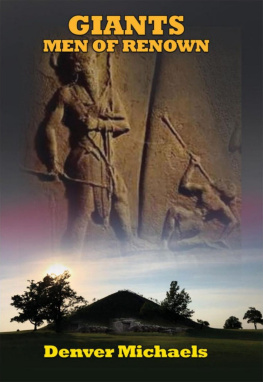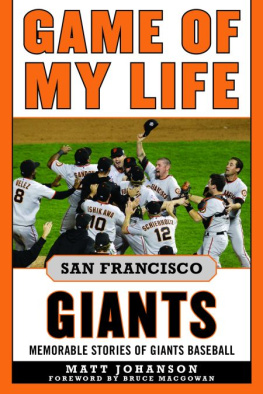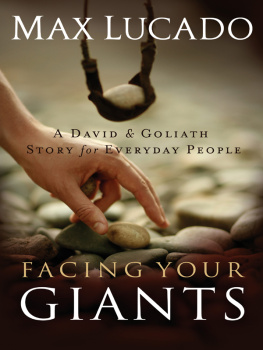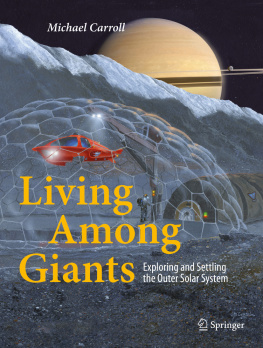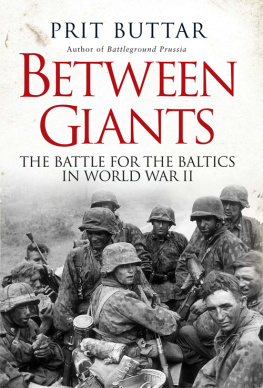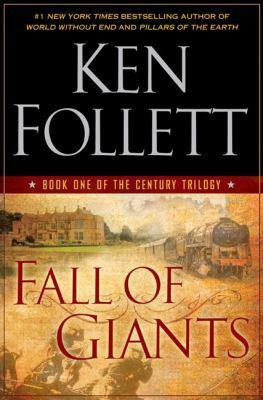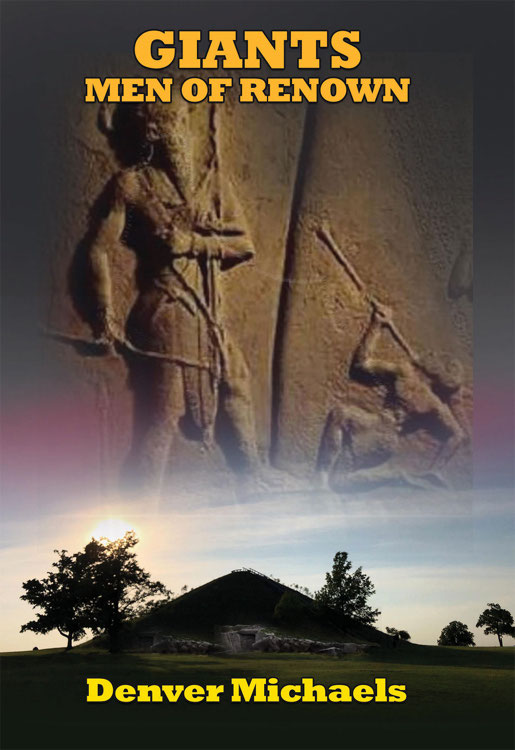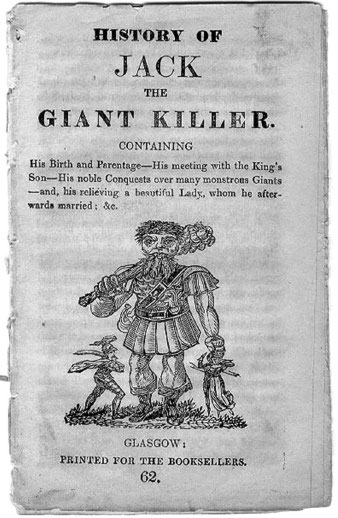GIANTS
MEN OF RENOWN
Denver Michaels
Acknowledgements
First and foremost, I must thank my wife Stefanie. Since I started this writing thing a few years ago, she has been my biggest supporter and number one fan, and her belief in me has never wavered. We have been empty nesters now for a couple of years, and undoubtedly, my devotion and long hours to this book and other projects has made the loneliness and adjustment harder than it should have been. But I promise to make it right. I want to thank everyone who helped me in any way with the research for this book. There are far too many to mention, but I am thankful for all your support. I especially would like to thank Ross Hamilton and Scotty Roberts for making themselves available for interviews and being so generous with their time and for sharing their knowledge.
Lastly, I want to thank David Hatcher Childress and the good folks at Adventures Unlimited Press for taking a chance on me and publishing this book. I am grateful.
Other Books by Denver Michaels:
People are Seeing Something: A Survey of Lake Monsters in the United States and Canada
Water Monsters South of the Border
Wild & Wonderful (and Paranormal) West Virginia
Detours Into the Paranormal: Atlantic City Road Trip
GIANTS
MEN OF RENOWN
Denver Michaels
Giants: Men of Renown
Copyright 2020
by Denver Michaels
All Rights Reserved
ISBN: 978-1-948803-25-0
Published by:
Adventures Unlimited Press
One Adventure Place
Kempton, Illinois 60946 USA
AdventuresUnlimitedPress.com
10 9 8 7 6 5 4 3 2 1
GIANTS
MEN OF RENOWN
Denver Michaels
TABLE OF CONTENTS
Introduction
A Legacy of Giants
Whereas the modern world equates myth with imaginative invention, ancient cultures used it as an instrument for recording important facts and events so they would be memorized and recalled generation after generation.
Freddy Silva,
The Missing Lands: Uncovering Earths Pre-flood Civilization
It must have been around 1980 or so when my interest in the topic of giants began. I was seven or eight years old at the time, sitting in Sunday school class at a Holiness Pentecostal church deep in the mountains of southwestern Virginia. Our lesson and coloring pages that morning were from 1 Samuel 17the David and Goliath story. Most every kid that goes to church at least semi-regularly will go over that lesson several times during their church career, and even those who do not attend church know the gist of the story.
Well now I hope yall can see that nothin, and I mean nothin, is too big for God, Mrs. Fox said in her heavy Southern Mountain Speech accent with a broad, toothy smile.
At some point during the lesson, I raised my hand and asked, Sister Fox, how much is a cubit?
Honey, I dont know. Why?
Im tryin to figure out how tall Goliath was, but I dont know how much a cubit is.
Well sweetie, I heard preachers say he was ten foot tall! I thought about that for a while until it finally hit my young mind like a freight train. Ten feet? Ten feet! As I reflected on Mrs. Foxs response, I recalled my dad telling me that the rim to the basketball hoop out at the back end of the church parking lot was ten feet off the ground. Good grief!
Almost forty years have passed since then, and Im still thinking about Goliaththe man who could almost stand at eye level with a basketball rim. Of course, as a boy I missed the entire point of the David and Goliath lesson. The lowly shepherd boy, empowered only by his faith in God, rose to the challenge and slew the mighty giant. That was supposed to be the big takeaway. I was meant to leave class and take that story and apply it to my own lifeyou know, no challenge in life is too big if I will only put my trust in God. Meh. Who cares? But a man standing as tall as a basketball hoopthats what I took from the story!
So, here we are.
Our Collective Fascination
The ogres and witches and giants of fairytales stand in as metaphors for those obstacles that we all face in our own lives.
Kate Forsyth
As a people, it seems we are inherently drawn to stories of giants. Most everyone remembers the English fairy tale Jack and the Beanstalk, a story which features a tamed version of Jack. The original Jack was a renowned giant slayer in English folklore, known as Jack the Giant Killer. Parents everywhere read the G-rated Jack story to their children, and it has even been adapted for television and featured in cartoons. In the story, Jack acquires magic beans which cause an enormous stalk to grow outside his window, and he climbs the stalk and comes upon a castle high in the sky inhabited by a giant. The giant smells Jack and bellows out the famous rhyme:
Fee-fi-fo-fum!
I smell the blood of an Englishman:
Be he alive, or be he dead,
Ill grind his bones to make bread.
As the story progresses, Jack steals gold coins and other treasure from the giant as he sleeps. However, during one of Jacks excursions, the giant wakes up and chases him down the beanstalk. In the nick of time, Jack chops down the beanstalk before the giant reaches the ground causing him to fall to his death. I find it interesting that the giant smelled Jack and wanted to eat him. Surely the plethora of tales from around the world in which giants feast on human flesh is the inspiration for the cannibalistic trait of the giant in the fairy tale.
As mentioned, the tale of Jack and the Beanstalk is something of a sanitized, G-rated version of Jack the Giant Killer. Jack is an English hero, an archetype appearing in a number of stories and fairy tales, and the Jack the Giant Killer story is set during the reign of King Arthur. In the story, Jack becomes famous and earns the nickname Jack the Giant Killer after he kills a giant named Cormoran using a pitfall trap. Upset over Cormorans death, a giant cannibal named Blunderbore captured Jack and took him to an enchanted castle. Blunderbore was no match for Jack, however, as Jack hanged and stabbed the giant and his brother.
The classic book Jack the Giant Killer.
Throughout the story, Jack encounters one giant after another and puts them to the sword. Jack even beheaded Lucifer in the story and gained membership into the prestigious Round Table. It is noteworthy that Jack often employed trickery in his battles against the giants, once even tricking a two-headed giant into splitting open his own abdomen. As we shall see throughout the first part of this book, trickery is often used to defeat giants in tales all over the world.
Giants are prominently featured in English literature. In Jonathan Swifts classic novel Gullivers Travels, Gulliver lands on a peninsula called Brobdingnag which is inhabited by a race of giants. These people are exceedingly tall, standing as high as sixty feet and walking with ten-foot strides. Everything in Brobdingnag is large and in proportion with the giant-sized people: insects are as large as birds; rats are the size of dogs; and enormous flora grows on the island. Swifts Brobdingnag is much like the antediluvian world of legend and the megafauna and megaflora are quite like those of the Pleistocene epoch. Gulliver himself goes on to become a giant during his travels. After a shipwreck, he is marooned on the island nation of Lilliput, and the diminutive, yet belligerent, inhabitants take him prisoner.

